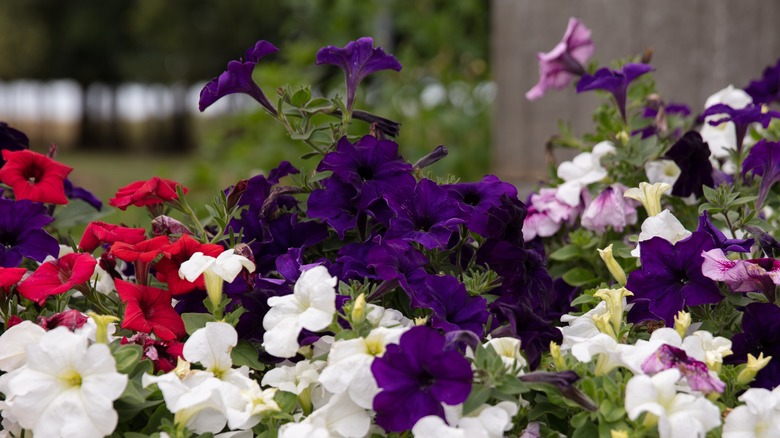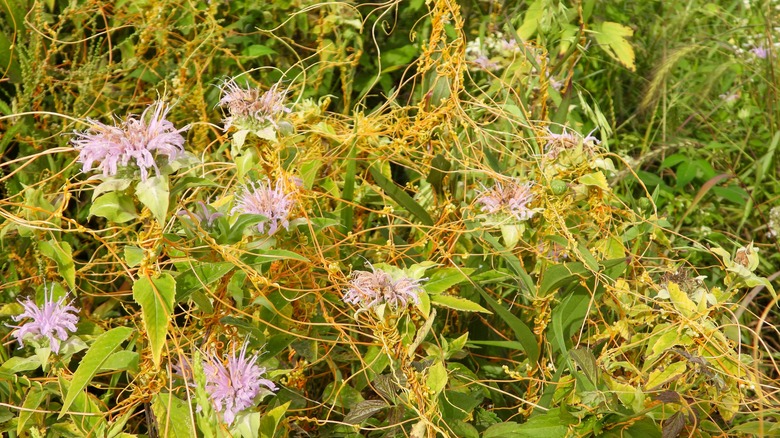If You See A Weedy Vine On Your Petunias Remove It Immediately. Here's Why
Petunias are a favorite for many gardeners, but even these resilient flowers can fall victim to an unwelcome invader: the dodder vine. Also known as strangleweed or devil's hair (appropriately named), this sneaky, parasitic plant can take over your garden in no time. It's not like your typical weed that grows from the soil and competes for nutrients. Instead, dodder skips the root system altogether and latches directly onto your petunias. Once it's attached, dodder starts feeding off your petunias with specialized structures called haustoria, which dig into the plant's tissues and rob them of everything they need to survive.
What starts as a tiny vine can quickly spiral out of control. As the dodder vine grows, it spreads to other parts of your petunias, wrapping itself around the stems and leaves. It doesn't stop there either -– if left unchecked, it will branch out and attack neighboring plants. This vine doesn't just weaken your plants physically; it also opens them up to disease and other issues. Your petunias might lose their vibrant colors, start to droop, and eventually die off if you don't take action quickly.
One of the biggest challenges with dodder is how fast it can spread without you even noticing. As mentioned, it doesn't behave like common garden weeds that shoot up from the ground, making it harder to spot in the early stages. By the time you see those bright yellow or orange threads, it's often already taken hold. The key is early detection and immediate removal. If you wait too long, your petunias might not recover, and the dodder could spread to the rest of your garden.
How to remove dodder vine from your petunias
When it comes to dealing with dodder, the quicker you act, the better. The first step is to inspect your petunias closely. Dodder vine usually appears as a thin, thread-like vine in shades of yellow and orange, wrapping around your plants. Check all the stems and leaves, paying special attention to any areas where the vine has attached itself. And don't forget to look around neighboring plants as well — dodder spreads fast.
Once you've spotted the dodder, you can't just pluck the vine off and call it a day. The best way to eliminate dodder is to cut off any part of your petunias that the vine has attached to. Yes, it might mean sacrificing a chunk of your plants, but it's the only way to ensure the vine doesn't keep growing or come back stronger. Grab a pair of clean, sharp garden shears and cut slightly below where the vine has latched on, making sure to remove all the infected areas. It's important not to leave any pieces of the vine behind, as even small bits can grow back.
After cutting off the dodder-infested parts of your plants, you need to dispose of them carefully. Don't toss them into your compost pile – dodder seeds or vine pieces could survive and spread again. Instead, put the infected plant material in a sealed plastic bag and throw it away with your regular trash. If you're dealing with a large infestation, you might want to consider burning the affected plants to make sure the dodder is fully eradicated.

